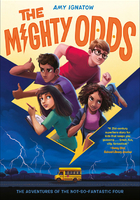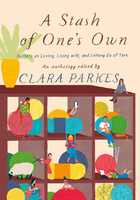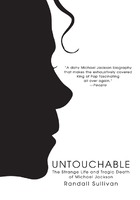Distracted driving is all over the news these days, because it can be a real hazard. Nearly one in five injury crashes involved reports of distracted driving in 2010. More than 3,300 people were killed in crashes involving a distracted driver, and an additional 387,000 people were injured in motor vehicle crashes involving a distracted driver in 2011, according to the National Highway Traffic Safety Administration. And don't think it's just the young generation.
Most adults who drive regularly admit to engaging in distracting behaviors while behind the wheel. Some 86 percent eat or drink while driving, 59 percent use a handheld cellphone, 41 percent fiddle with their GPS device, 37 percent text and 14 percent apply makeup, according to a Harris Interactive/HealthDay poll.
"Distracted driving can be deadly driving," says Julie Lee, vice president and national director of AARP Driver Safety. "Researchers are finding that any type of distraction is risky, not just the ones we typically think of as dangerous, like texting or talking on the phone."
Ten states, the District of Columbia and many local jurisdictions prohibit talking on handheld cellphones while driving, and 39 states have banned text messaging while driving. But that's just the start. Here are steps you can take to stay safe.
Top Tips to Avoid Distracted Driving
To avoid distractions, focus, focus, focus. Think of driving as a job that requires your full attention. Use these tips to stay safe and avoid distractions while driving:
Before you start driving, turn off your cellphone, switch it to silent mode or, better yet, put it in your trunk. Any phone call or text message you receive can wait until you arrive at your destination or have stopped safely.
Review maps and directions before you begin. Directions can be a huge distraction while driving-printed maps, in-vehicle navigation units and map apps on your smart phone. If you need to review directions while driving, ask a passenger for help or pull over to a safe location.
Refrain from eating or drinking. We all do it, especially when we're in a hurry to make an appointment, have skipped a meal or just can't make it through the rest of the drive without a cup of joe. But eating or drinking while driving involves taking at least one hand-and part of your attention-off the wheel.
Just drive. Refrain from smoking, reading, combing your hair, fiddling with the CD, radio and other controls or engaging in any other activity that takes your eyes, ears or mind off of the road ahead.
Be on the lookout for distracted drivers. If you see drivers who you suspect are "under the influence" of distractions-talking on the phone or putting on makeup, for example-change lanes or let them pass you.
Don't rubberneck. Slowing down or pulling over to get a better look at an accident could cause another accident. If your eyes are on the crash that you're approaching or passing, they're not on the road ahead of you. Police in Greenbelt, Maryland, cited rubbernecking as the probable cause of a double accident that shut down a major highway during a morning rush hour in August 2012.
Take care of your basic needs. The effects of hunger, thirst and fatigue on attention spans and reflex times have been known for years. In addition, new research shows that you shouldn't postpone that bathroom break. A strong urge to urinate can impair your functioning as effectively as drinking alcohol or being sleep deprived, according to a study led by Dr. Peter Snyder, vice president of research for Lifespan, a Rhode Island-based health system.
Strategies to Avoid Drowsy Driving
Drowsy driving is a serious safety threat to the driver as well as to everyone on his or her path: other drivers, passengers and pedestrians. Each year, drowsy driving is a factor in approximately 17 percent of fatal car crashes, according to the AAA Foundation, and causes more than 100,000 crashes each year, according to the National Highway Traffic Safety Administration, resulting in an estimated 1,550 deaths and more than 40,000 injuries. And these are likely conservative numbers, because it is widely recognized that drowsy driving is underreported as the cause of automobile accidents.
A variety of safety strategies can keep you alert behind the wheel. The key is to recognize when you are simply too drowsy to drive, to understand how to prepare for long drives and to know what to do when you're overcome with sudden exhaustion while on the road.
Know when you shouldn't drive-and don't. Drowsy driving behavior is very similar to drunk driving, and it can be just as dangerous. In one survey by AAA, almost 90 percent of police officers said they had at least once pulled someone over suspecting them of intoxication, only to find the suspect was drowsy, not tipsy. Oftentimes, the warning signs of sleepiness are easy to spot. Yawning excessively, missing a traffic sign and having difficulty focusing are all signs you may not be alert enough to drive. More serious indications of drowsy driving include drifting out of your lane, having trouble remembering the last few miles and accidentally following too closely behind another driver. If you find yourself exhibiting any of these symptoms, pull over to a safe area and take a break.
Plan and prepare for long-distance drives. Long drives can be challenging for all drivers, regardless of experience. The most important way to prepare for a long drive is to get ample sleep, at least eight hours, the night before. Having a driving partner and alternating shifts will also help prevent exhaustion. Regardless of whether you have a driving partner, stop at least every 100 miles or every two hours to use the restroom, stretch your legs and get fresh air. Finally, check with your doctor or pharmacist to see if any prescription and over-the-counter drugs you take can make you drowsy. (See the section on medications in Chapter Four.)
Fight sudden exhaustion. Sudden exhaustion while driving is relatively common, but as the statistics prove, it can be incredibly dangerous. If you suddenly grow tired behind the wheel, the most effective thing you can do is to pull over to a safe area, such as a rest stop or gas station, and take a quick nap. A 15-to 20-minute nap can revive you and make the trip much safer. But beware: Sleeping for more than 20 minutes may make you feel even drowsier. If you have more than an hour left in your drive and a nap does little to reduce your exhaustion, consider stopping to get a full night's sleep before getting back on the road. You shouldn't rely entirely on coffee or caffeinated soda to keep you alert and functioning. Coffee and caffeine certainly help, but only to a point. If you have a long drive, the caffeine can give you a burst of energy, but then you might "crash" later. And sugary drinks can make you sleepier. Researchers from the U.K.'s Loughborough University Sleep Research Center suggest the most effective way to alleviate drowsiness is to drink an 8-ounce cup of strong coffee (or its caffeine equivalent), then nap for 15 to 20 minutes. When you wake up, you should feel re-energized and the caffeine will just be kicking into your system.
Pedestrian Safety Tips
Fortunately, pedestrian accidents, like many traffic accidents, are preventable.
In 2010, 4,280 pedestrians were killed and an estimated 70,000 were injured in traffic crashes in the United States. On average, a pedestrian was killed every two hours and injured every eight minutes in traffic crashes, according to the National Highway Traffic Safety Administration. In 2011, more than 1,152 people were treated in emergency rooms for injuries caused by walking while talking or texting on their cellphone.
When you're in the driver's seat: Drivers can help avoid an accident by abiding by these five tips:
Always be on the lookout. Pedestrians can be found anywhere, even places where you're not expecting them (like highways or busy, multiple-lane intersections with above-ground crossovers). Frequently scan the road, shoulders and sidewalks ahead of you to spot pedestrians.
Stay alert. Assuming they have the right-of-way, many pedestrians walk into the street without confirming that oncoming traffic is aware of their presence. And pedestrians-especially children-are often hidden between parked cars or behind other objects, including stopped or turning vehicles. To avoid an accident, keep vigilant.
Show caution. There are likely areas in your community where you can anticipate pedestrians. At crosswalks and intersections, drive slowly and stop for pedestrians looking to cross-even if they are not at a marked crosswalk. When stopping at an unmarked point, press on your brakes far enough in advance so that the drivers behind you can see your brake lights and prepare to stop. When approaching a red light, be sure to stop far enough behind the line for pedestrians to cross safely.
Be respectful. Do not show hostility or aggression to or honk at drivers who are yielding to pedestrians. Never attempt to pass the stopped vehicle in front of you.
Watch for children. Because of their small size, children can be difficult to spot. Drive slowly and be on the lookout, especially in school zones and residential neighborhoods.
When you're walking: Safe walking is just as important as safe driving. If you're the pedestrian:
Use the sidewalk. If the street is not designed for pedestrians, avoid walking on it. Do not walk on highways or in restricted zones.
Obey "walk" and "do not walk" signs. In most states, jaywalking is an illegal offense for which you can receive a ticket.
Never assume you're seen. Don't assume that a vehicle will stop for you just because you are waiting to cross. Try to make eye contact with the driver before crossing. Do not cross multiple lanes of traffic without making sure the drivers in all lanes see you. Always look both ways before crossing-even when you have the pedestrian "walk" symbol-because drivers do occasionally run red lights.
Avoid walking long distances under the influence of alcohol or drugs. Just as you should never drive under the influence, do not walk long distances or in traffic-heavy areas when you are under the influence. Call a taxi or use public transportation.
Be courteous. When drivers stop to allow you to cross, give them a quick wave to demonstrate your appreciation.















